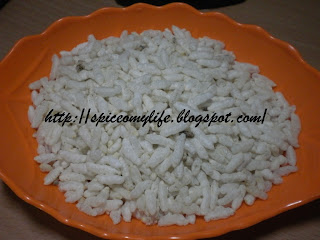It is already hot here. Days are hot with temperatures rising day by day. But mornings and late nights are still cool. Though some snacks are supposed to be eaten during winter time, I feel that one can eat any time as they are tasty nutritious and healthy. These are spicy, tangy, a combination of sweet and sour-one can adjust the tastes to ones liking.
Chats, bhujias, pakodas,...the list of such snacks is endless.These are our traditional snacks undergoing some changes now with the influence of other cuisines. But the basic recipe remains the same. I also add my twist to these snacks now and then to create something new.
But Health experts may say that Chatpata snacks may always be not healthy-that is more oily, more spicy and may affect our digestive systems as well as our health in general. I am not saying that our traditional recipes are not healthy. They are healthy. It is our changed and sedentary life styles or the change in ingredients or cooking styles which make it difficult for us to eat that stuff now.
However there is a way out for this. We need not simply abstain from eating these snacks. There are ways and means to cook them in a healthy way. How it is you will learn in the coming posts. I will post the traditional recipes with improved methods of cooking...
Here is the first one...
Pidata kindi Pappu Or Masala Maramaraalu
This is one of the most common snacks sold on the streets of India especially South India and was most popular till a few years back and still is to some extent. I love this and just thinking about it makes me drool. Pidata means a small earthen ware pot. Pappu means lentil. Pidata kindi pappu is a snack where, the puffed chick pea lentil (even boiled) and spiced chickpea, puffed rice along with other ingredients is kept hot by a small earthen ware pot with burning coals in it. It is spicy and a very light snack. Its healthy, requires no oil, easy to make and any time snack. Children or grown ups all will like this once they get to taste it.
This snack is made in many parts of India. Recipe may differ form region to region. It is known as Jhaal Muri or Masal Muri in Bengal or Bhel puri in North India.
Before going into the preparation and the recipe, let us see what Puffed Rice is.
Puffed Rice-Maramaraalu
Puffed Rice known as Maramaraalu (Telugu) and Murmure (Hindi). It is made by roasting the rice on hot sands. Its some thing like how pop corn is made from corn. It is eaten as a snack in most of India. Some snacks or dishes are also made out of it.
Read more on it here:
http://en.wikipedia.org/wiki/Puffed_rice
Now for the recipes...
1. Simple Recipe
Ingredients:
Puffed rice 1 cup
Ghee (clarified butter) 1 tsp or 1 Tbsp
Salt To taste
Red chilli powder 1/2 tsp to 1 tsp
Garam Masala Powder 1/2 tsp
Lemon juice to taste
Method:
Before going into the preparation and the recipe, let us see what Puffed Rice is.
Puffed Rice-Maramaraalu
Puffed Rice known as Maramaraalu (Telugu) and Murmure (Hindi). It is made by roasting the rice on hot sands. Its some thing like how pop corn is made from corn. It is eaten as a snack in most of India. Some snacks or dishes are also made out of it.
Read more on it here:
http://en.wikipedia.org/wiki/Puffed_rice
Now for the recipes...
1. Simple Recipe
Ingredients:
Puffed rice 1 cup
Ghee (clarified butter) 1 tsp or 1 Tbsp
Salt To taste
Red chilli powder 1/2 tsp to 1 tsp
Garam Masala Powder 1/2 tsp
Lemon juice to taste
Method:
- Mix all the ingredients in a bowl and serve.
- Roast the puffed rice slightly in a pan to give it crispness.
- Alternately, while roasting add the ghee and other ingredients, mix well and serve.
- Depending upon the amount of the puffed rice and calorie counting, you can use 1tsp or 1 tbsp of ghee.
- If you are dieting and want to avoid calories, avoid ghee all together as lemon juice will help in binding the spice powders.
- This is very easy to make, simple, low calorie, healthy snack one can eat any time.
- This is good for children too but adjust spices according to their taste.







EC.jpg)
EC.jpg)

EC.jpg)














